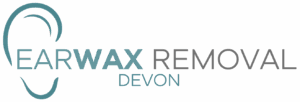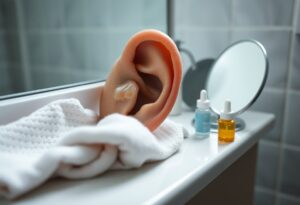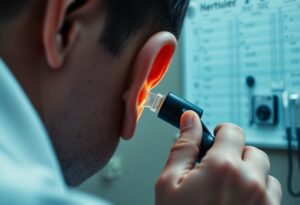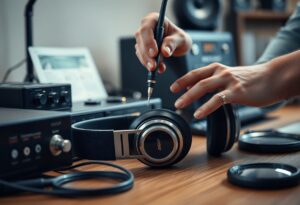Over time, you may experience a buildup of earwax, which can lead to discomfort or hearing issues. It’s important to address this naturally while ensuring you don’t cause harm to your ears. This guide will provide you with safe and effective methods for earwax removal, allowing you to maintain your ear health confidently. From natural remedies to over-the-counter options, you’ll learn how to manage earwax safely and effectively, ensuring your ears remain clean and functional.
Key Takeaways:
- Safe methods for earwax removal include using softening drops, irrigation, and gentle manual removal by a healthcare professional.
- Avoid using cotton swabs or any objects that can push wax deeper into the ear canal or cause injury.
- Consult with a healthcare professional if experiencing symptoms like pain, hearing loss, or blockage before attempting removal.
The Biology of Earwax and Its Purpose
What is Earwax Made Of?
Earwax, or cerumen, consists of a blend of secretions from sebaceous and ceruminous glands in your ear canal, mixed with dead skin cells, dust, and debris. The primary components are long-chain fatty acids and cholesterol, contributing to its sticky texture. This composition varies among individuals, influencing the color and consistency of the earwax, which can range from wet and yellowish to dry and flaky.
The Role of Earwax in Ear Health
Earwax plays a protective role in maintaining ear health by trapping dust, bacteria, and other foreign particles. It prevents infections and aids in self-cleaning the ear canal, promoting overall auditory function. The natural movement of your jaw helps to push earwax out of the ear canal, carrying debris with it and minimizing the risk of blockage.
This self-cleaning mechanism is crucial for preventing conditions like ear infections or excessive wax buildup. In fact, earwax helps maintain the pH balance of the ear canal, which discourages bacterial growth. An optimal amount of earwax ensures that your ears remain lubricated, while excessive removal can lead to dryness and potential irritation. Understanding these functions underscores the significance of earwax in your routine ear care, emphasizing the need for safe removal practices rather than aggressive cleaning methods.
Common Misconceptions About Earwax
The Myth of ‘Excessive’ Earwax
Many believe that an abundance of earwax indicates poor hygiene or a health issue. In reality, earwax production varies significantly among individuals and serves important functions, such as trapping dust and debris and protecting the ear canal from infections. Your body typically self-regulates earwax levels, so what may seem excessive to you could simply be a normal variation.
Why Cotton Swabs Are Not Ideal
Using cotton swabs for earwax removal is a common practice, yet it often leads to more harm than good. Swabs can push wax deeper into the ear canal, potentially causing blockages, irritation, or even damage to the eardrum. Many healthcare professionals discourage their use, citing that they are ineffective for cleaning and can create a false sense of security regarding ear cleanliness.
Cotton swabs can also contribute to a cycle of earwax buildup. You may find yourself using them repeatedly in an attempt to remove what feels like excess wax, inadvertently compacting and pushing it further down. This makes future removal more difficult and increases the likelihood of experiencing discomfort or hearing issues. Alternative cleaning methods, such as ear drops or consulting a healthcare provider, are often more effective and safer for maintaining ear health.
Potential Risks of Improper Earwax Removal
Physical Injuries to the Ear Canal
Improper earwax removal techniques, such as using cotton swabs or sharp objects, can lead to injuries in the ear canal. These methods can cause abrasions, punctures, or even lacerations, which may result in bleeding or infection. Such injuries not only impair your ability to hear but can also lead to discomfort and persistent pain in the ear.
Long-Term Hearing Issues
Unintended damage during earwax removal attempts can have lasting effects on your hearing. Chronic inflammation or recurrent infections resulting from physical trauma can lead to permanent changes in hearing capability. Subsequent blockages may form, compounding the risk of further auditory complications.
Long-term hearing issues stemming from improper earwax removal may manifest as conductive hearing loss, where sound transmission through the outer or middle ear is hindered. In some cases, individuals may experience temporary or permanent auditory deficits following repeated ear canal injuries. It’s imperative to allow professional evaluation if you suspect any persistent changes in your hearing following inappropriate removal methods.
Professional Earwax Removal Options
Manual Removal Techniques by Doctors
Your healthcare provider may utilize specialized instruments, such as a curette or suction device, for manual earwax removal. This technique allows for precision and minimizes the risk of injury to the ear canal. The procedure typically takes place in a clinical setting, where the doctor can thoroughly assess your ear health and ensure a safe removal process. Expect a quick visit that may include a discussion of your symptoms and earwax buildup history.
Ear Irrigation: What to Expect
Ear irrigation involves flushing out earwax with a gentle stream of warm water or saline solution. This method is often done in a clinical setting, ensuring precise control over the pressure and temperature of the fluid used. You’ll sit in a comfortable position, with an absorbent towel placed around your shoulders to catch any excess fluid. A healthcare professional will guide the process, helping to dislodge and eliminate the buildup effectively.
During the ear irrigation procedure, you might feel a slight pressure or a sensation of fullness in your ear as the water flows through. Typically, the process lasts only a few minutes. Afterward, your doctor will inspect the ear canal to ensure all wax has been removed and check for any signs of irritation or infection. Following irrigation, you can usually leave with clean ears and a sense of relief from any discomfort caused by excess wax. Be sure to discuss any aftercare recommendations with your provider to maintain ear health moving forward.
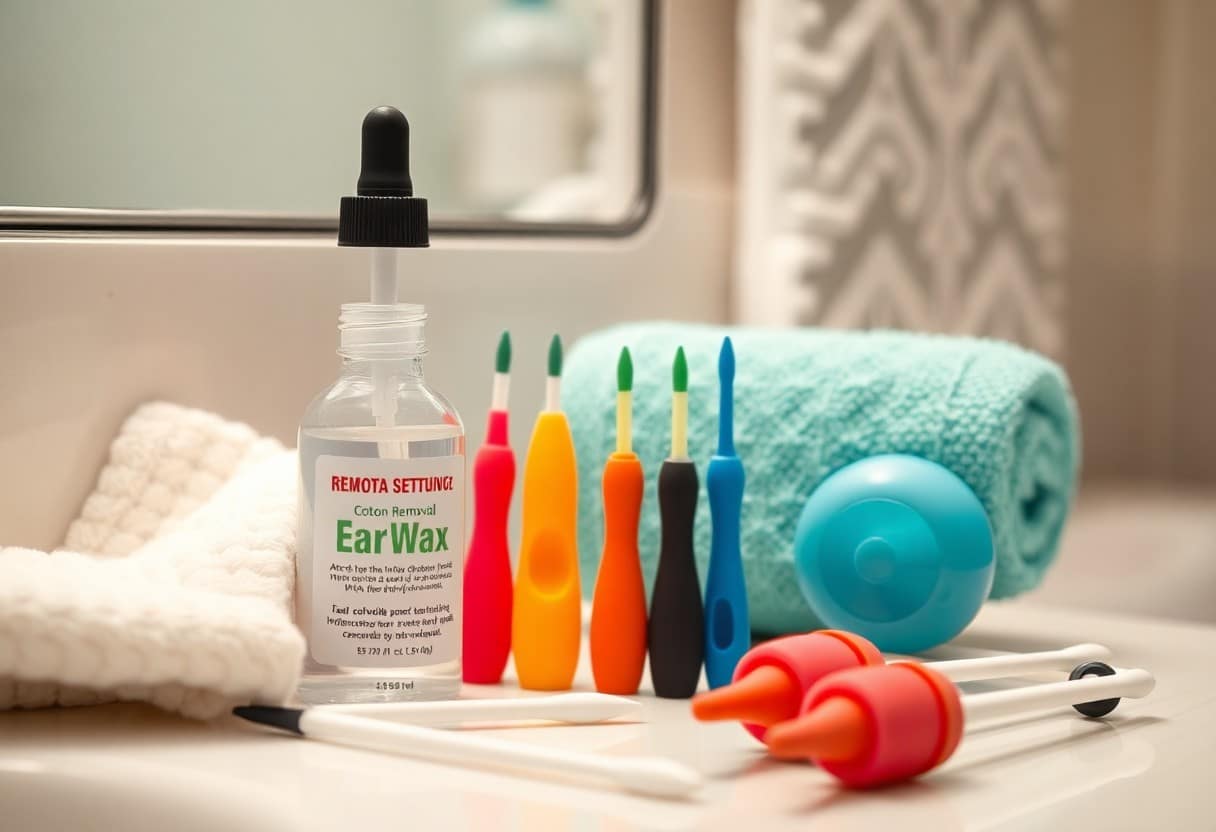
At-Home Methods for Safe Earwax Removal
Safe Over-the-Counter Solutions
Over-the-counter earwax removal drops typically contain ingredients like carbamide peroxide, which helps to soften and break up earwax for easier removal. Using these drops according to the instructions allows you to effectively manage earwax buildup without the risk of injury. You can often find these products at pharmacies and they are designed to complement your ear health by safely softening wax, making it easier for your ears to naturally expel the buildup.
Natural Remedies that Work
Natural remedies for earwax removal often involve the use of oil-based solutions, such as mineral oil, olive oil, or hydrogen peroxide, to soften the wax. Applying a few drops into your ear can facilitate gentle loosening, allowing for easier removal through regular washing or natural drainage. Many people find these methods effective and less harsh than chemical alternatives, making them a popular choice for ear health maintenance.
In addition to oil-based solutions, warm water irrigation is another natural technique you can employ. After softening the wax with oil, gently flushing your ear with warm water can help wash away the loosened debris. Be cautious with water pressure; using a bulb syringe with gentle suction is safer than direct water flows. Incorporating these methods into your self-care routine not only helps manage earwax but also supports overall ear hygiene without the risks associated with invasive procedures.
Best Practices for Ear Care
Tips for Preventing Earwax Buildup
You can minimize earwax buildup by adopting simple habits in your daily routine. Regularly cleaning your ears with a damp cloth can effectively prevent excess accumulation. Additionally, avoiding the use of cotton swabs or other objects that may push wax deeper is beneficial. Hydration is crucial, as it helps maintain a healthy ear environment. Incorporating these practices can keep your ears clean and comfortable.
- Clean your ears with a damp cloth.
- Avoid inserting objects into your ears.
- Stay hydrated to support ear health.
Recognizing signs of excessive earwax, such as muffled hearing or ear pain, can prompt timely preventive care.
When to Seek Professional Help
If you experience persistent symptoms like severe earache, noticeable hearing loss, or a feeling of fullness in your ear that doesn’t resolve, seeking professional help is necessary. Regular check-ups can also identify potential buildup before complications arise. For individuals prone to earwax blockage due to anatomical variations or frequent use of earplugs and headphones, professional evaluations can provide tailored care plans and early interventions to prevent escalation. Consultation with an audiologist or ENT specialist ensures targeted and effective solutions for your ear health.
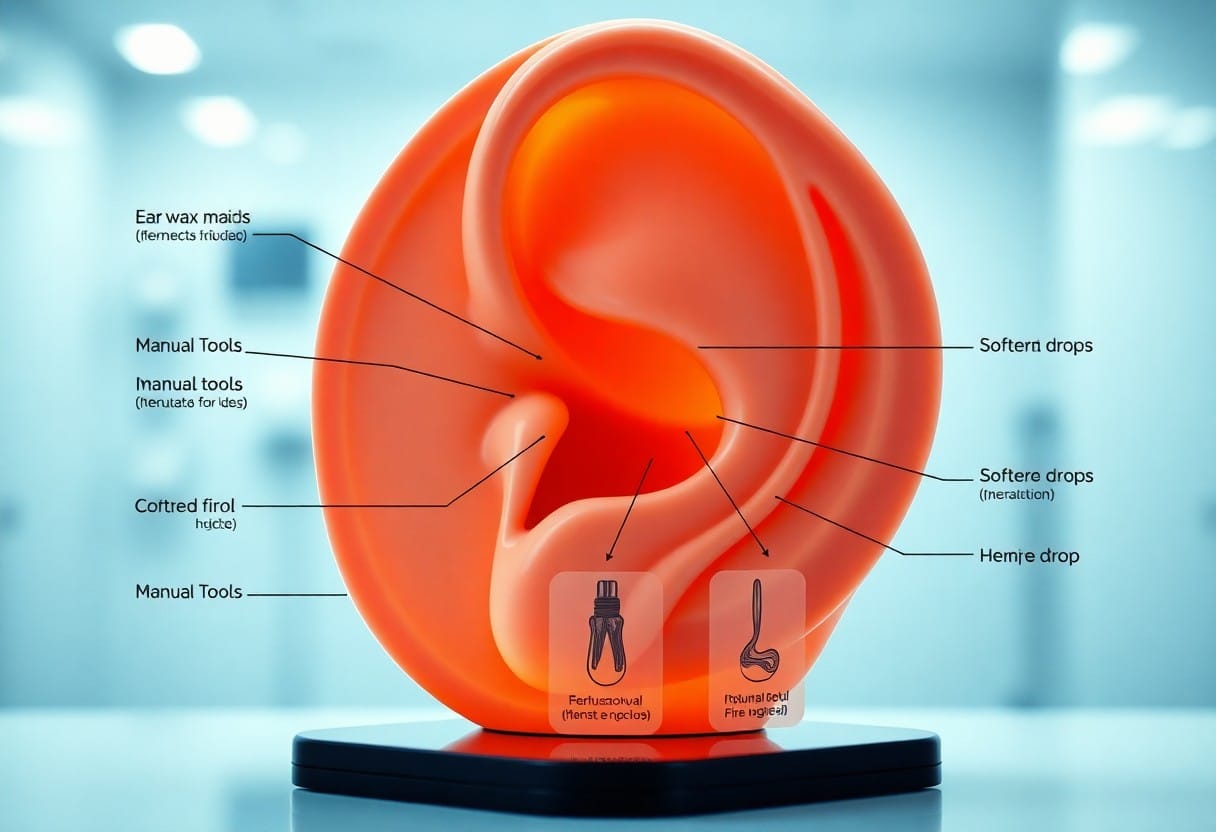
The Future of Earwax Management
Innovations in Ear Care Technology
Innovative technologies are transforming ear care, with new devices designed for safe earwax removal gaining traction. For instance, endoscopic equipment allows for clearer visualization of the ear canal, enabling you to navigate safely while removing wax. Smart irrigation systems may also streamline the cleaning process, ensuring gentle and effective removal while minimizing the risk of injury. With advancements like these, you can expect more efficient and user-friendly solutions in the near future.
Shifts in Public Perception of Earwax
Societal attitudes towards earwax are evolving, moving away from stigma and misunderstanding. Awareness campaigns and online resources have begun to educate the public about the natural role of earwax in ear health, emphasizing that it is not inherently dirty or unhealthy. This shift encourages more people to seek informed and appropriate methods for ear care, rather than resorting to outdated and potentially harmful practices.
As awareness grows, individuals are much less likely to view earwax as merely a nuisance, understanding instead its protective functions within the ear. Public discussions and educational materials highlight that while excessive earwax can lead to issues, a balanced perspective acknowledges it as an important bodily substance. With the reduction of misconceptions, you are more likely to pursue evidence-based removal methods and understand when professional assistance is necessary, reflecting a healthier engagement with personal hygiene practices.
Summing up
On the whole, using safe earwax removal methods is crucial for maintaining your ear health and preventing potential complications. By opting for techniques such as irrigation, gentle manual removal, or consulting a healthcare professional, you can ensure that your ears remain clean without risking damage. Avoid using cotton swabs or other sharp objects, as these can push wax further in and lead to blockages. Prioritizing safe practices will help you manage earwax effectively and protect your hearing.
FAQ
Q: What are the common methods for earwax removal?
A: Common methods for earwax removal include over-the-counter ear drops, warm mineral oil, saline solution, and irrigation devices. It’s important to avoid using cotton swabs as they can push wax deeper into the ear canal.
Q: Are earwax removal kits safe to use?
A: Earwax removal kits are generally safe when used according to the instructions. Look for kits that come with a gentle irrigation system or oil drops. If you experience pain or discomfort, discontinue use and consult a healthcare professional.
Q: How often should I have my ears checked for earwax buildup?
A: It’s advisable to have your ears checked during regular health check-ups, especially if you have a history of excessive earwax buildup. Consult your doctor if you notice symptoms like hearing loss or discomfort.
Q: What should I avoid when trying to remove earwax?
A: Avoid using tools like cotton swabs, bobby pins, or any sharp objects, as these can cause injury or push wax further into the ear. Also, refrain from using unapproved home remedies that can lead to complications.
Q: When should I seek professional help for earwax removal?
A: Seek professional help if you experience symptoms such as severe pain, hearing loss, or persistent itching in the ear. A healthcare provider can safely remove excessive wax and minimize the risk of complications.
